PARK SLOPE URNS vs. BASEBALL BATS (1914)
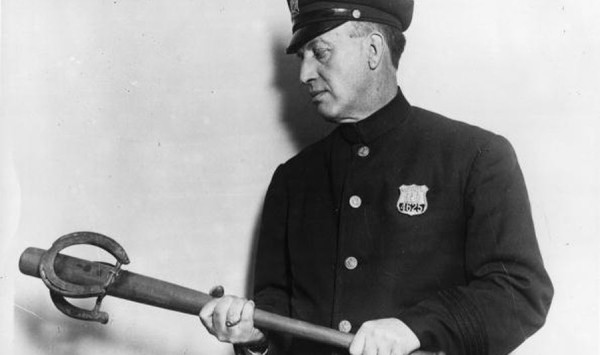
******************************************************************************************************************************** Brownstone Detectives investigates the history of our clients’ homes. The story you are about to read was composed from research conducted in the course of one of those investigations. Do you know the history of YOUR house? ******************************************************************************************************************************** On a still warm September morning in 1914, residents of the homes along the first block of Prospect Park Southwest woke to find something out in front of their houses distinctly off-kilter. As they exited their limestone rowhouses, several of them were shocked to see what appeared to be concrete rubble strewn up and down the block along the sidewalks and within their gates. Leaving their doors and approaching their gates, they began to realize the inanity of the cause – many of their decorative concrete urns, which had been perched peacefully upon the short columns flanking their front gates, had been destroyed overnight. As neighbored surveyed the block, there seemed to be no method to the madness of the demolition of these pieces of architectural ornamentation. Simply put, some neighbors had theirs undisturbed, while others’ urns were a pile of concrete on the sidewalk. The blame was quickly laid squarely at the feet of the local youth – toughs, rowdies, gangs, hoodlums. HOODLUMS It was a common story of the day. Gangs of loafers gathered on corners assaulting women verbally as they passed into the park. Roughs fighting along certain streets at odd hours of the mornings. Rowdies, after drunken trips to Coney Island, ending their nights on a high […]
THE FIRE AT NO. 382 PARK PLACE (1903)
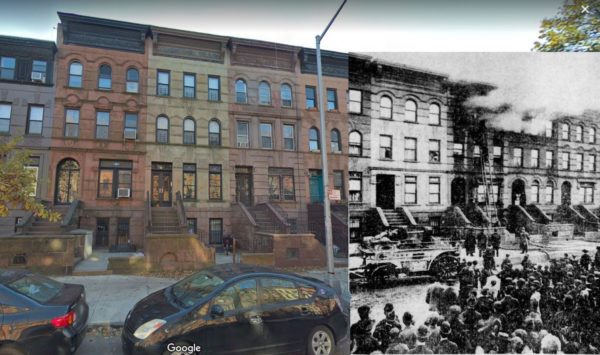
******************************************************************************************************************************** Brownstone Detectives investigates the history of our clients’ homes. The story you are about to read was composed from research conducted in the course of one of those investigations. Do you know the history of YOUR house? ******************************************************************************************************************************** All new homeowners begin their “home” journey with a blank slate. This is especially true in the case of owners of very old properties. They have very little information about the history of the structure they will be living in and nothing at all about the people who once lived there. When we meet with clients for the first time and reveal an important historical event involving their house, they begin to realize a very important historical tenet: Each house has a history. For one house, that history may include a tale about a runaway child. For another it could be a bankruptcy that led to a foreclosure on the home, followed by the family’s ignominious departure in the wee hours. For yet another, it may be a fire that almost destroyed the entire house that they had just purchased. For No. 382 Park Place, it was the flames. “THE FIRE CAUSED MUCH EXCITEMENT…” In a newspaper article accompanied by a picture of the firemen fighting the conflagration, the known details were spelled out – from the person who was home to how the fire was reported and what damage was done. “Fire broke out late yesterday afternoon in the house at 382 Park place and the work of the firemen […]
THE SKY BLUE CEILINGS OF 121 HENRY ST (1889)
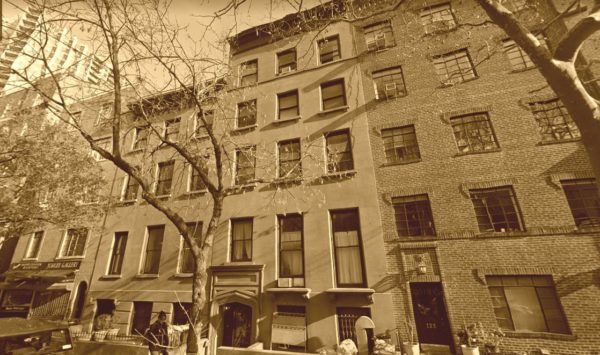
******************************************************************************************************************************** Brownstone Detectives investigates the history of our clients’ homes. The story you are about to read was composed from research conducted in the course of one of those investigations. Do you know the history of YOUR house? ******************************************************************************************************************************** In the late 1880s, the Brooklyn Daily Eagle started a series of articles which described – in great length and detail – the interiors of individual newly-built or renovated houses. These houses were usually brownstones belonging to those affluent or upper-middle-class members of society. Not only did such articles describing the interiors of neighbors’ homes sell newspapers, but the articles also served as advertising directed at those in the market for a townhouse to have a home of their own. These advertisement-articles were placed, likely at the expense of the designers responsible for the “interior decorations” being described, as each piece often ended with what readers wanted to know. “Who did the work?” WORK IS BY JOHANSMEYER & KOENKE, NEW YORK The “three story brown stone residence,” at “121 Henry street, near Clark,” was owned by Henry L. Meyer, who – at the time – was a hotel keeper, but who would rise to the position of treasurer of the Consumers Brewing Company. Meyer lived in the house with his wife and two daughters. In 1889, Meyer, who had recently acquired the (what until then had been used as a) rooming house, embarked upon a whole-house renovation, employing the New York City designers Johansmeyer & Koenke. Theodore C. Johanesmeyer and Bernhard […]
HAS YOUR BROKER BEEN FOOLING YOU? (1905)
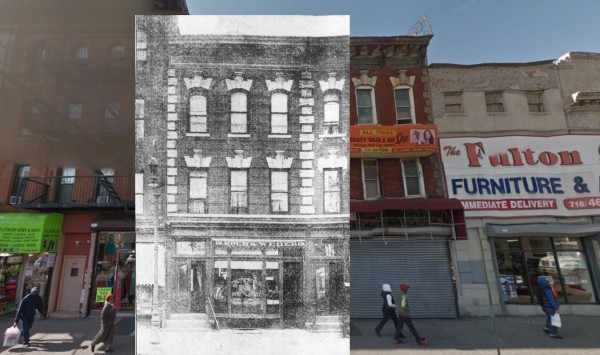
******************************************************************************************************************************** Brownstone Detectives investigates the history of our clients’ homes. The story you are about to read was composed from research conducted in the course of one of those investigations. Do you know the history of YOUR house? ******************************************************************************************************************************** In 1905, No. 838 Flatbush Avenue was only a few years old. But it was already on its third tenant. The Brooklyn Daily Eagle opened its Flatbush office at No. 838 (today, No. 834) that year, forcing Weber & Koch realtors out the door. The building had been constructed by Captain Henry Hoffman. Hoffman, referred to as captain from his sailing days, was the sole surviving member of the crew of the schooner America which had brought the America‘s Cup to the United states in 1851. In business life, Hoffman was a big man in New York society, having been a millionaire coal merchant, though, in 1905, and reputedly (according to many sources – amongst them the Daily Eagle) the wealthiest man in Flatbush at the time. Hoffman had originally expected to use the site for the real estate dealings he dabbled in. Soon after building the structure, however, Hoffman would sell and move on. The new owners would be the borough’s premiere newspaper, the Brooklyn Daily Eagle, which would maintained the office as a branch of the newspaper up until around the late 1920s. In 1918, however, part of the building was taken up by another organization. The Flatbush Chamber of Commerce established itself there. All this from an unassuming […]
THE HUNGRY BURGLARS OF HENRY ST. (1890)
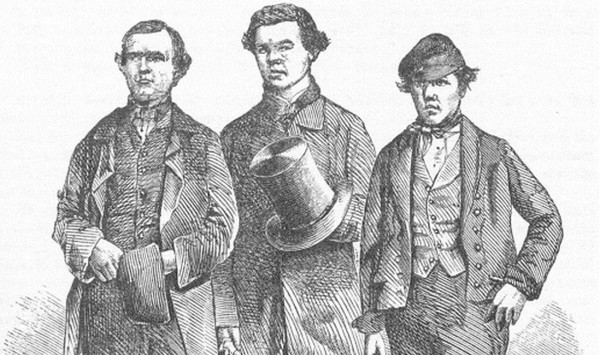
******************************************************************************************************************************** Brownstone Detectives investigates the history of our clients’ homes. The story you are about to read was composed from research conducted in the course of one of those investigations. Do you know the history of YOUR house? ******************************************************************************************************************************** Not all burglars are intent on “getting in and out quick.” And so it was when, in 1890, two Brooklyn thieves, during a burglary of a Brooklyn Heights home, actually interrupted their own burgling in order to sit down and enjoy a full meal – before carting off their substantial haul. It was in the wee hours of a February morning when the men were prowling about for a target of opportunity. Approaching Henry Street, they noticed the corner house at No. 303. The entire house was dark and so, hopping the fence, they approached the back of the residence to check the kitchen windows. Finding them closed and locked, they forced one of them open, then entered the house. The Brooklyn Daily Eagle noted that the burglars, at this point, began to help themselves to “everything they could find on the basement floor.” In the process they “broke open the cook’s trunk and stole $18 of her savings,” and “carried away silverware and a clock valued at $60.” Before going, however, finding themselves hungry and realizing they were in the house’s kitchen, they located the dishware and glasses, and fastidiously set the table. Soon, they were all seated and enjoying “a substantial meal of meat, bread, cake, and other articles […]
DRAPED IN OLD GLORY AT 159 ADELPHI (1905)
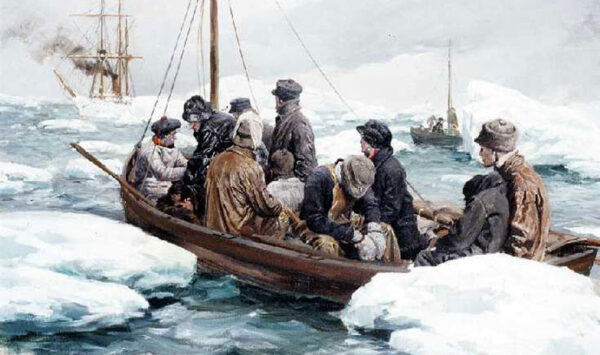
******************************************************************************************************************************** Brownstone Detectives investigates the history of our clients’ homes. The story you are about to read was composed from research conducted in the course of one of those investigations. Do you know the history of YOUR house? ******************************************************************************************************************************** “Few men have lived lives of greater adventure and achievement than John Quevedo, whose body, in a flag-draped coffin, lies at his home, No. 159 Adelphi street, Brooklyn.” So read an article in the Duluth Evening News of 9 February 1905. “Fifty years in the United States Navy, a member of the crew that, under Commodore Perry, opened Japan to Western civilization, one of Farragut’s men in the big sea lighting of the Civil War and, greatest of all, one of the gallant crew that under Schley dared the perils of the frozen North and rescued Greely from his starvation camp at Cape Sabine. Such is the record of John Quevedo. “A Spaniard born, he had been in the American Navy since he was 16. His father was a bluejacket before him, and his son fought under Dewey at Manila, and is now instructor of gunnery at the Brooklyn navy yard. “For the past decade John Quevedo has been the storekeeper at the navy yard ever since a shell fell on his feel on board the Boston and incapacitated him from further active service. Two weeks ago the veteran was attacked by paralysis and gradually sank into death.” A GREELY RESCUE HERO “Of all his adventures, he spoke most proudly of […]
THE JAPANESE GILT OF 150 HANCOCK ST (1887)
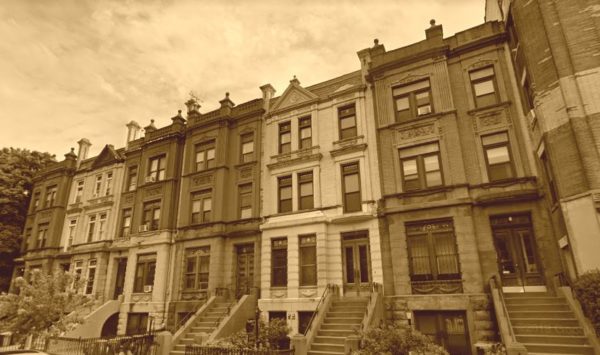
******************************************************************************************************************************** Brownstone Detectives investigates the history of our clients’ homes. The story you are about to read was composed from research conducted in the course of one of those investigations. Do you know the history of YOUR house? ******************************************************************************************************************************** Much of the design selections made by designers in the last part of the 19th century are comprised of a coterie of materials, patterns, and tools either no longer available today or much changed in their appearance. Although most builders used simple materials that did not require the knowledge or training of a master designer, some of the more high-end brownstone constructors utilized the services of those who would tailor their interiors toward the more affluent members of society. In the late 1880s, the Brooklyn Daily Eagle started a series of articles which described – in great length and detail – the interiors of individual newly-built or renovated houses. These houses were usually brownstones belonging to those affluent or upper-middle-class members of society. Not only did such articles describing the interiors of neighbors’ homes sell newspapers, but the articles also served as advertising directed at those in the market for a townhouse to have a home of their own. These advertisement-articles were placed, likely at the expense of the designers responsible for the “interior decorations” being described, as each piece ended with what readers wanted to know. “Who did the work?” THE WORK WAS DONE BY HALBERT In 1886, a row of Queen Anne style 3-story and basement “brown stone houses” […]
SATAN’S CANDY SHOP (1911)
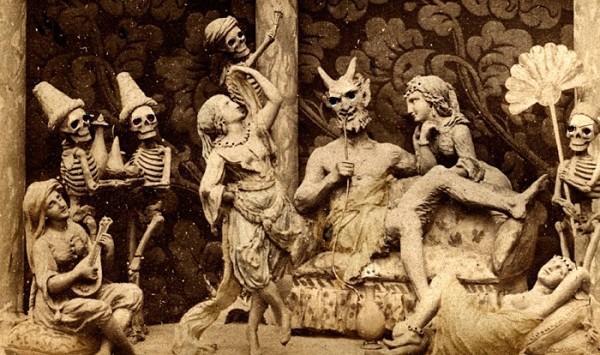
******************************************************************************************************************************** Brownstone Detectives investigates the history of our clients’ homes. The story you are about to read was composed from research conducted in the course of one of those investigations. Do you know the history of YOUR house? ******************************************************************************************************************************** If a man named Hell offered you some candy – would you take it? That was Otto Herman Hell’s problem. And, yes, in fact he was about to open a confectionery in Brooklyn on Broadway. THE DEVIL’S CONFECTIONER It must have been difficult growing up with a name like Hell. There were probably countless jokes and plays on the name. Otto must have been quite tired of it all by the time he reached the age of maturity, at which point he began thinking seriously about changing it. Having emigrated from Germany in 1891, he was 25 when the immigration officials must have looked up at him in surprise as he stood before them hoping to gain entry into the country. “Hell? Hell?” the official must have half-asked, half-shouted, incredulously. “O’Connor, come quick, or you’ll have Hell to pay!” Lots of uproarious laughter here, then a loud stamp, and then Hell was on to the next set of jokes somewhere in his new country. He probably found it curious in the early days, perhaps a bit enjoyable if he had had a playful streak. But, by George, it was 1911 now, and Otto was 36 with a wife and two children. He was more than ready to get serious with his […]
THE BOY HOODLUMS OF HANCOCK STREET (1899)
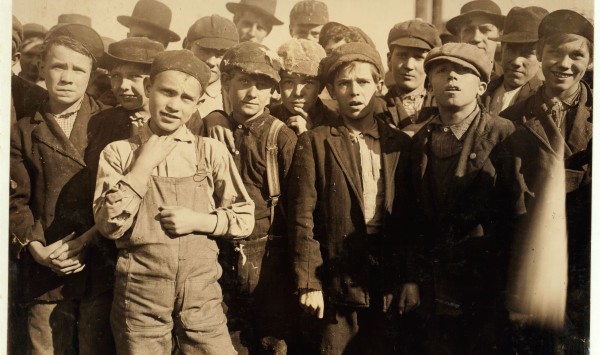
******************************************************************************************************************************** Brownstone Detectives investigates the history of our clients’ homes. The story you are about to read was composed from research conducted in the course of one of those investigations. Do you know the history of YOUR house? ******************************************************************************************************************************** If you were a boy hoodlum in “Bed-Stuy” back in 1899, then it is a good bet that you conducted your “outrages” along that stretch of Howard Avenue between Halsey and Hancock Streets. For it was there that a “small reign of terror” was “inaugurated” during this period, as small gangs of boys “armed with sticks and stones” prowled about the area with determined mal intent. A NEIGHBORHOOD COMPLAINS – THE EAGLE RAILS “The irrepressible and unregenerate young generation of boys in the vicinity of Howard avenue and Halsey street are making existence a heavy load to the law abiding population of that community,” railed the Brooklyn Daily Eagle. “The choicest lot of hoodlums in the city have banded themselves together,” the paper continued “and use that block as a fixed center, from which they conduct a campaign of well planned outrages for a radius of many blocks around.” A CASE IN POINT Two boys, in particular, were reported to the police after having assaulted a “little 10 year old boy who was going to the grocery store for his mother.” The boys, a 14-year-old member of the Earle family living at at 73 Howard Avenue and a boy named Goldstein, living at 96 Howard Avenue, “led the charge upon the […]
FIRST DAY OF SCHOOL IN BROOKLYN (1916)
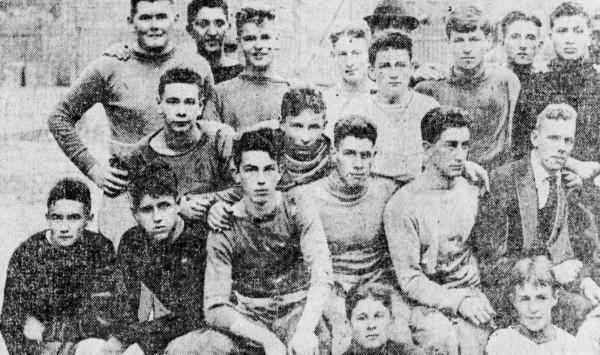
******************************************************************************************************************************** Brownstone Detectives investigates the history of our clients’ homes. The story you are about to read was composed from research conducted in the course of one of those investigations. Do you know the history of YOUR house? ******************************************************************************************************************************** For those of your sending children off to school these days, we leave you with a picture story of the first day of school back in 1916. It appears that school children had it very much the same as they did more than 100 years later. Check out the outfits, the books, the toys, the football uniforms, and….the Crokinole? Follow @BrownstoneDetec Share ———————————————————————————————————————– The Brownstone Detectives Brownstone Detectives is an historic property research agency. Our mission is to document and save the histories of our clients’ homes. From our research, we produce our celebrated House History Books and House History Reports. Contact us today to begin discovering the history of your home.